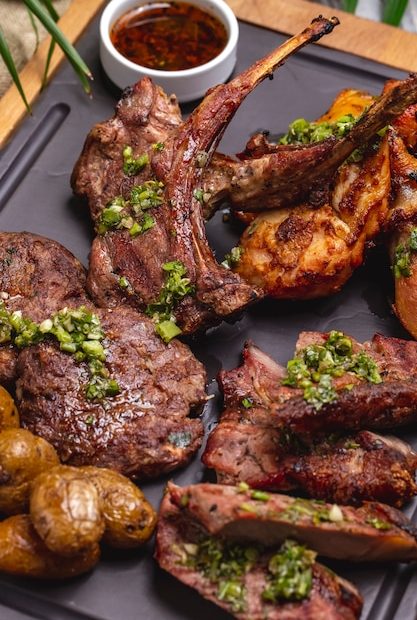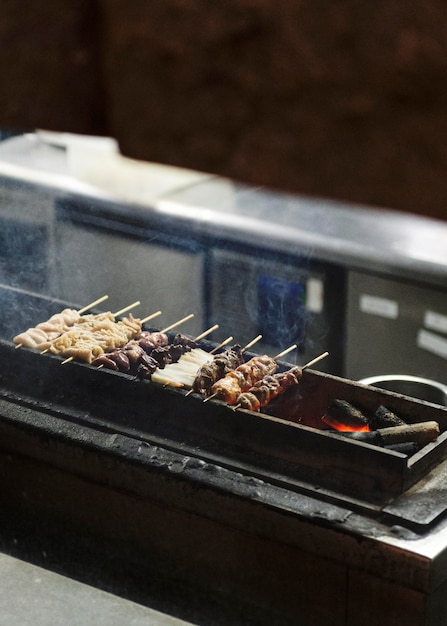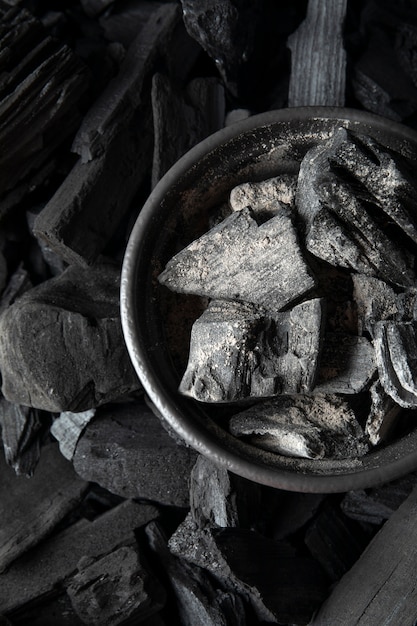Does beef get softer the longer you slow cook it?
Slow cooking is a popular method used to tenderize tough cuts of beef and bring out their rich flavors. But does beef really get softer the longer you cook it? The short answer is yes. Slow cooking allows tough connective tissues in the meat to break down over time, resulting in a more tender and succulent dish.
Why slow cooking is ideal for tougher cuts of beef
When it comes to cooking beef, not all cuts are created equal. Tougher cuts from muscles that do more work, such as the shoulder or rump, contain more collagen and connective tissues. These tougher cuts require longer cooking times to break down these connective tissues and make the meat tender.
Collagen is a protein that holds the muscle fibers together and gives structure to the meat. When collagen breaks down during slow cooking, it converts into gelatin, which adds moisture and tenderness to the meat.
Slow cooking at low temperatures allows ample time for this process to occur, resulting in a melt-in-your-mouth texture that is perfect for stews, roasts, and braises.
The science behind slow cooking
During the slow cooking process, the meat goes through several stages of tenderness. Initially, the meat contracts and becomes tougher due to the heat. However, as the collagen starts to break down, the meat gradually becomes more tender.
In fact, a study published in the Journal of Food Science found that cooking meat at lower temperatures for longer periods resulted in significantly more tender meat compared to higher temperature, shorter cooking methods.
As the temperature increases, the collagen continues to break down further, and the muscle fibers begin to shrink and lose moisture. This can result in dry and stringy meat if not properly controlled.
Factors affecting the tenderness of slow-cooked beef
While slow cooking is generally a reliable method for tenderizing beef, several factors can affect the final texture. These include:
- The cut of beef: Different cuts have varying amounts of collagen and connective tissues.
- The cooking time: Longer cooking times allow for more collagen breakdown.
- The cooking temperature: Lower temperatures are ideal for collagen breakdown, whereas higher temperatures can cause the meat to dry out.
- The type of slow cooker: The efficiency and heat distribution of different slow cookers can influence the final result.
Tips for achieving perfectly tender slow-cooked beef
To ensure your slow-cooked beef turns out tender and flavorful, consider these tips:
- Choose the right cut of beef: Tougher cuts like chuck, brisket, or shank are excellent choices for slow cooking.
- Marinate the beef: A marinade or brine can help further break down the muscle fibers and enhance flavor.
- Use low and slow cooking temperatures: Opt for lower temperatures (around 200°F/95°C) and longer cooking times to allow for collagen breakdown.
- Brown the meat before slow cooking: Searing the beef before placing it in the slow cooker adds additional flavor and helps retain moisture.
- Utilize liquid and aromatics: Adding broth, wine, or other liquids, along with aromatic herbs and spices, can infuse the meat with extra flavors.
In conclusion, slow cooking is an excellent method for transforming tough cuts of beef into tender and delicious dishes. The extended cooking time allows the collagen in the meat to break down, resulting in a softer texture and richer flavor. By selecting the right cut, using low temperatures, and incorporating various techniques, you can achieve perfectly tender slow-cooked beef that will impress your taste buds.
Is 12 hours too long to slow cook a roast?
Slow cooking has become increasingly popular in recent years, as it allows for tender and flavorful dishes with minimal effort. One common question that arises when it comes to slow cooking is whether cooking a roast for as long as 12 hours is too excessive. Let’s explore the factors that determine the ideal cooking time for a roast.
Choosing the Right Cut of Meat
The cut of meat you choose plays a crucial role in determining the cooking time. Tougher cuts of meat, such as chuck or brisket, benefit from longer cooking times to break down the connective tissues and become tender. On the other hand, leaner cuts like sirloin or tenderloin may become dry and overcooked if slow-cooked for too long.
Consider the Size and Weight
The size and weight of the roast also impact the cooking time. Larger roasts generally require more cooking time to ensure that the heat penetrates evenly. Smaller roasts, on the other hand, might become dry and overcooked if left for too long. A general rule of thumb is to allow around 30 minutes of cooking time per pound of meat.
The Benefits of Long Cooking Times
While 12 hours may seem excessive, there are benefits to slow-cooking a roast for an extended period. The longer cooking time allows the flavors to meld together, resulting in a richer and more developed taste. The meat also becomes incredibly tender, practically falling apart, making it perfect for pulled beef or shredded roast sandwiches.
Tip: If you’re concerned about the roast overcooking, consider using a slow cooker with a timer function or a programmable oven to ensure precise cooking times.
In conclusion, whether 12 hours is too long to slow cook a roast depends on the cut, size, and personal preference. For tougher cuts, longer cooking times can be beneficial, but for leaner cuts, it’s best to reduce the cooking time to prevent dryness. The key is to experiment and find the perfect balance that suits your taste and desired level of tenderness.
Can you overdo beef in the slow cooker?
Slow cookers are a popular kitchen appliance, especially in the UK, for their convenience and ability to produce tender and flavorful meals. One common concern when cooking beef in a slow cooker is the risk of overcooking the meat, resulting in a dry and tough texture. However, with proper technique and timing, it is possible to avoid this pitfall and achieve perfectly cooked, melt-in-your-mouth beef.
The importance of selecting the right cut of beef
When using a slow cooker, it is essential to choose the right cut of beef that can withstand long hours of cooking without drying out. Cuts such as chuck roast, brisket, and short ribs are ideal as they contain a good amount of marbling and connective tissue, which break down during slow cooking, resulting in tender meat.
Proper seasoning and liquid ratio
Seasoning the beef with your favorite herbs and spices is key to adding flavor to the dish. Additionally, ensuring that there is enough liquid in the slow cooker is essential to prevent the beef from becoming dry. A general rule of thumb is to use about 1/2 to 1 cup of liquid per pound of beef.
The role of time and temperature
The beauty of slow cookers lies in their ability to gently cook food over a long period at low temperatures. Setting the slow cooker to the appropriate temperature and allowing enough cooking time is crucial for achieving tender beef. It is generally recommended to cook beef on low heat for 7 to 8 hours or on high heat for 4 to 5 hours, depending on the recipe and cut of beef.
Remember, slow cookers are forgiving and allow you to leave the beef cooking without constant monitoring. However, overcooking can still occur if left for extended periods beyond the recommended cooking time.
Pro tip: If you’re concerned about overcooking, use a meat thermometer to check the internal temperature of the beef. For most cuts, it’s best to aim for an internal temperature of around 145°F (63°C) for medium-rare or 160°F (71°C) for medium.
By following these tips and guidelines, you can avoid overdoing beef in the slow cooker and enjoy tender, succulent results every time. So, go ahead and experiment with different cuts and recipes to create delicious slow-cooked beef dishes that will impress your family and friends.
How to Get Beef Tender in a Slow Cooker?
Slow cookers are a fantastic kitchen appliance for convenient and flavorsome meals. If you’re looking to achieve tender, melt-in-your-mouth beef using a slow cooker, there are a few key tips and techniques to keep in mind. Let’s explore some of the best methods to ensure your beef turns out perfectly tender every time.
Choose the Right Cut of Beef
When it comes to slow cooking beef, choosing the right cut is crucial. Opt for cuts that are known for their tenderness, such as chuck roast, brisket, or short ribs. These cuts contain a good amount of marbling, which melts during the slow cooking process, resulting in a tender texture.
Season and Brown the Meat
To enhance the flavor of the beef, season it generously with salt, pepper, and any other desired herbs or spices. Before placing the meat in the slow cooker, sear it in a hot pan to develop a rich, caramelized crust. This step not only adds depth to the flavor but also helps to retain moisture within the meat.
Add Moisture and Flavorful Ingredients
To prevent the beef from drying out during the slow cooking process, add liquid such as beef broth, red wine, or a combination of both. Additionally, consider incorporating flavorful ingredients like onions, garlic, herbs, or Worcestershire sauce into the cooking liquid. These will infuse the meat with extra taste and aroma.
Cook on Low Heat for Longer
For tender beef, it’s essential to cook it on low heat for an extended period. Slow cookers typically have two temperature settings: low and high. Opt for the low setting, which allows the meat to cook slowly and evenly. Cooking times can vary depending on the size and type of beef cut, but a general guideline is around 6-8 hours on low.
Let it Rest
Once the beef has finished cooking, resist the temptation to dig in immediately. Allowing the meat to rest for about 10-15 minutes before serving helps it retain its juices and ensures a more tender texture. Use this time to prepare any side dishes or garnishes that will accompany the main course.
Remember, the slow cooker does most of the work for you; all you need to do is follow a few simple steps and let it work its magic!
Following these tips will help you achieve perfectly tender beef in a slow cooker. Whether you’re preparing a comforting beef stew, pulled beef for sandwiches, or a flavorful pot roast, your slow cooker can be your secret weapon for succulent and delicious beef dishes.
Disclaimer: Cooking times and results may vary depending on individual slow cooker models and personal preferences.
How do I make sure my slow cooked beef is tender?
Slow cooking beef is a fantastic way to achieve tender and flavorful results. However, ensuring that your beef turns out tender requires proper preparation and cooking techniques. Here are a few tips to help you on your way to deliciously tender slow cooked beef:
Choosing the Right Cut
When slow cooking beef, it’s important to choose the right cut of meat. Cuts that are well-marbled with fat, such as chuck roast or brisket, work best for tenderizing through slow cooking. These cuts contain connective tissues that break down during the long cooking process, resulting in juicy and tender meat.
Seasoning and Browning
Before placing the beef in the slow cooker, season it generously with salt, pepper, and any additional spices or herbs you prefer. Browning the beef in a hot skillet before transferring it to the slow cooker can enhance the flavors and texture. The caramelization that occurs during browning adds depth to the overall taste of the dish.
Patience is Key
Slow cooking is all about allowing the meat to cook low and slow over a longer period of time. This gentle, prolonged heat breaks down the connective tissues and collagen in the beef, resulting in tender and melt-in-your-mouth texture. Be patient and avoid the temptation to rush the cooking process by turning up the heat.
Using Liquid and Acidic Ingredients
Adding liquid, such as broth, wine, or even beer, to your slow cooker helps create a moist cooking environment, which prevents the beef from drying out. Additionally, acidic ingredients like vinegar or tomatoes can help further break down the collagen in the meat, resulting in a more tender outcome.
Resting and Shredding
After the beef has finished cooking in the slow cooker, allow it to rest for a few minutes before shredding or slicing. This helps the meat retain its juices and ensures a tender final result. Use two forks to easily shred the beef or cut it against the grain for maximum tenderness.
Remember, slow cooking takes time and patience, but the end result is well worth it – tender, flavorful beef that falls apart with each bite!
Can you overcook meat in a slow cooker on low?
Using a slow cooker is a convenient and easy way to cook meat, especially for those with busy schedules. However, one common concern is whether it is possible to overcook meat in a slow cooker, particularly when using the low setting. Let’s explore this topic further.
The benefits of slow cooking
Slow cooking meat in a slow cooker on low heat has numerous benefits. The low temperature allows the meat to cook slowly over a longer period, which helps to tenderize tougher cuts of meat. Additionally, this method retains more moisture and flavors compared to traditional cooking methods, resulting in juicy and flavorful dishes.
Understanding cooking times and temperatures
While slow cooking is great for achieving tender results, it is important to be mindful of cooking times and temperatures. Slow cookers typically have a low setting that operates between 170°F (77°C) and 200°F (93°C). This temperature range ensures thorough cooking and helps prevent any harmful bacteria or pathogens from surviving.
Preventing overcooking
While it is difficult to overcook meat if you follow the recommended cooking times and temperatures, there are a few factors to keep in mind to prevent overcooking:
- Choosing the right cut: Opt for cuts of meat that are well-suited for slow cooking, such as chuck roast, pork shoulder, or chicken thighs. These cuts have more connective tissue, which breaks down during long cooking times and results in tender meat.
- Monitoring cooking times: Different meats and sizes will require varying cooking times. It is essential to follow recipes or guidelines specific to the type and weight of meat you are cooking.
- Using a meat thermometer: Checking the internal temperature of the meat using a meat thermometer helps ensure it reaches the appropriate doneness without overcooking. For example, beef should reach an internal temperature of at least 145°F (63°C) for medium-rare.
Remember, it is always better to slightly undercook meat in a slow cooker than to overcook it. You can always cook it for a bit longer if needed, but once it’s overcooked, there’s no turning back.


